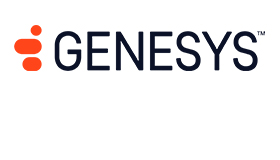Steve Offsey at Genesys explains what you need to know about customer journey analytics.
Customer journey analytics is the science of analyzing customer behavior across touchpoints and over time to measure the impact of customer behavior on business outcomes.
This approach continues to gain momentum as enterprises recognize the value of customer journeys as a means to monitor customer experience performance and identify opportunities for improvement.
Measuring customer experience is still a struggle for many enterprises. For the past three years, organizations have ranked quantifying the ROI of CX initiatives and investments as their greatest challenge.
Data and organizational silos are the primary barriers, particularly for banking, telecom and health insurance companies who are inundated with overwhelming amounts of data from millions of customers.
Today, more and more organizations rely on journey analytics to overcome these hurdles. In a recent CX survey, top-performing organizations ranked customer journey analytics as their second-highest CX-related investment priority.
In this post, I’ll explore how journey analytics supports a journey management program, the value your business can derive from this approach and how customer journey analytics compares to alternative methods and solutions.
How Journey Analytics Powers Your Journey Management Program
Customer journey analytics is an essential component of a successful customer journey management program, which enables organizations to manage, measure and improve CX and business outcomes.
It is the component that analyzes data, generates actionable insights to optimize journeys and continuously measures the performance of CX initiatives.
To manage journeys effectively, you need to start by aggregating customer data across channels and time. The result is customer journey data, which is time-series data that captures customer interactions indexed by time.
It powers real-time modeling and analysis, as well as orchestrating actions to optimize journeys. Unified customer journey data lays the foundation for your entire enterprise.
It’s the first step towards aligning cross-functional teams around journeys and breaking down traditional data and organizational silos.
Powered by an integrated source of customer journey data, journey analytics accelerates your ability to analyze customer journeys and score journey performance. Monitoring journeys, rather than isolated customer behavior in a limited number of channels, allows you to quickly understand which journeys best enable customers to achieve their goals.
Similarly, journey analytics enables you to pinpoint sources of friction that prevent customers from reaching their goals. Continuously tracking omnichannel behavior helps you identify issues that negatively impact both CX and business outcomes. By leveraging customer journey analytics you can:
- Diagnose new problems in real time
- Determine the best way to solve these issues
- Prioritize improvements based on potential impact on CX and business objectives
Finally, customer journey analytics is a critical piece of effective journey orchestration. Without analyzing journeys to understand what works and what doesn’t, orchestrating actions within certain journeys is a spray and pray approach.
Taking action to optimize customer journeys is most successful when it’s based on each customer’s overall experience with your organization.
Customer journey analytics is ideal for quantifying CX performance and tracking the results of your improvements in real time. This allows you to plan and even adjust your tactics on the fly based on actual customer behavior without waiting for an entire test to complete.
Five Ways Business Teams Benefit From Customer Journey Analytics
Customer journey analytics provides your entire enterprise with real-time insights into customer behavior. Sharing outcomes and collaborating on a journey-based approach is crucial to maintaining organizational alignment, which is essential for improving customer experience.
1. Customer Experience Teams
Quantifying the ROI of CX investments has been the top CX challenge for the past three years. Without the ability to demonstrate how customer behavior impacts business results, it’s nearly impossible for CX teams to make a business case for future budget increases. Customer journey analytics is gaining momentum as the best solution to this problem.
Journey analytics is also used by CX teams to facilitate customer journey measurement. This inherently journey-based approach helps CX leaders monitor:
- Journey milestones: Key steps customers take on their path to achieve their goal
- End-of-journey success metrics: Metrics that capture how well the experience enables your customers to reach their goals and your company achieve its desired outcome
- In-journey signals: Indicators along the journey that predict whether or not your customers are likely to achieve their goal
Together, in-journey signals and end-of-journey success metrics enable you to score all of your journeys and prioritize underperforming ones for improvements.
This approach helps you uncover the specific journeys that are driving changes in revenue or cost, which enhances your ability to make a powerful business case for change and future investment.
Customer Journey Analytics in Action: Leverage Journey Analytics to Understand What Drives NPS
A health insurance provider has received a number of complaints from members trying to pay their claims and seeks to understand how to improve the experience.
To further their understanding, the CX team uses the Pointillist Customer Journey Analytics application to analyze their Voice of the Customer data for members who completed the Pay a Claim journey.
They quickly perform the analysis by channel to understand differences between members who pay their claim through the website, IVR or speaking with a contact centre agent.
Their analysis shows that members who pay their claim through the IVR have the highest Net Promoter Score (NPS), while those that paid their claim through their website have the lowest NPS.
The CX team leverages this information to prioritize an initiative to improve the user experience of the web payment experience. In the meantime, the team makes a few quick changes on the website to make members more aware that they can easily pay claims through the IVR.
2. Marketing
Journey analytics allows marketers to better understand how to engage with each customer in the context of their overall journey. In other words, the steps your customers take towards achieving their goals, rather than how they engage with specific channels.
This allows you to advance personalization efforts and show your customers you truly understand them, which will improve acquisition, up-sell and cross-sell campaigns, as well as increase retention and loyalty.
Customer journey analytics also facilitates segmentation beyond demographic, geographic and firmographic information.
It enables behavioral segmentation, a form of customer segmentation based on how your customers behave. This enables marketers to increase campaign performance through improved targeting.
Most importantly, this approach also enables marketers to connect strategy and tactics to customer experience and business results.
This enables marketers to rise above opens and clicks and connect campaign performance to customer experience goals and business objectives such as revenue, cost and retention.
3. Analytics
For customer insights, analytics and BI teams, journey analytics is your key to answering internal questions faster.
Sophisticated no-code journey analytics solutions drastically reduce required skills, as well as data prep and analysis time. As a result, business users can answer more of their own questions and analysts can focus their efforts on more complex queries.
Analytics teams use journey analytics to detect issues as they arise and identify their root cause in minutes. Powered by AI, root cause analysis can rapidly reveal friction points within journeys and enable analysts to determine not just what is happening, but why it’s happening.
This way, analysts can determine exactly which interactions are driving or preventing your customers from achieving a successful outcome.
Customer journey analytics can also enhance and leverage outputs from custom data science models. Behavioral attributes can improve existing, as well as future models.
And by incorporating model output into journey analytics software, that information becomes available to every business unit across the organization to improve decision making.
Finally, analysts can use journey analytics to increase collaboration within their organization. Democratizing the results of analysis provides CX, marketing and other teams with the insights they need to take action and measure success.
Customer Journey Analytics in Action: Identify High-Impact CX Issues That Lead to Churn With Journey Analytics
The CX team at a leading telco uses Pointillist to understand the drivers of churn, so they can identify and prioritize CX initiatives that will have the largest impact on reducing churn.
First, the team uses customer journey analytics to analyze CX issues across all support channels to identify the most common issues customers encounter that could subsequently lead to churn. Through the analysis, they find that billing and tv issues are by far the most prevalent.
However, in the next step of the analysis they see that while the highest volume of customers are experiencing billing and tv issues, internet-related issues are actually driving the largest number of account closures and are responsible for the greatest revenue loss.
They also determine that customers who experience internet issues are most likely to churn, and at the highest velocity.
Armed with this new information, the CX team isolated two specific internet-related issues that are having the highest impact on churn, and prioritize an initiative to address them.
They anticipate that the initiative will reduce their overall churn rate by roughly 2.0%, saving the firm an estimated $1.8 million in lost revenue over the first 12 months after implementing the solution.
4. Digital
Every digital leader is under pressure to increase customer satisfaction while decreasing cost. And while these two goals may seem at odds with one another, journey analytics enables you to achieve both.
To meet these objectives, it’s absolutely critical to understand more than just drop-off rates or leakage into agent supported channels. Journey analytics is a reliable approach to uncovering which goals customers are trying to achieve within digital channels.
Since journey analytics offers the ability to analyze cross-channel journeys, digital professionals easily identify why customers use digital channels, why they transfer to other channels and which channels address their needs most effectively.
Based on this information, digital teams can take prescriptive steps to improve digital service and collaborate with CX, marketing and customer care teams to optimize end-to-end journeys. Together, you can decrease costs, while increasing customer satisfaction.
5. Customer Care and Service Teams
Similarly, contact centre leaders leverage journey analytics to identify the drivers of web and mobile chat, as well as phone calls. Once a customer reaches the contact centre, it’s crucial to understand their journey context: the goal(s) they are trying to achieve and the path they have taken to do so.
Understanding your customers in this way will enable your agents to serve customers more efficiently to minimize costs and improve customer effort and satisfaction along the way.
Further, service improvements will help reduce the volume of requests or cases that are escalated to supervisors, which typically cost you time, resources and your customers’ patience. Journey analytics is a crucial part of contact centre optimization.
Quantifying success within the contact centre is a challenge every enterprise faces. Customer journey analytics can leverage information from existing systems like natural language processors, text and speech analytics tools, customer feedback management systems and use those insights to help agents address customer needs.
Lastly, customer journey analytics helps contact centre professionals monitor contact centre metrics and quantify how those metrics impact key business objectives like cost to serve, NPS and more.
Customer Journey Analytics in Action: Decrease Support Call Volume and Spend With Customer Journey Analytics
A top retail bank wants to decrease support call volume and enhance operational efficiency. Tasked with finding the solution, the bank’s customer service team uses Pointillist Customer Journey Analytics to discover which journeys drive new clients to make a support call.
The team relies on their customer journey dashboards and sees that call volumes in Pay journeys are rising. Digging deeper, they notice that of the 12.5 million people who received their first bill, 1.1 million made a support call to complete their payment.
The data reveals that 81% of those calls were initiated because of a problem with one of the bank’s self-service channels, IVR. By discovering the root cause of the support calls and comparing the data across multiple touchpoints and systems, the CX team can now focus on finding and addressing issues in the IVR system.
The bank estimates that each call costs approximately $6 per agent-assisted contact. By decreasing call volume for clients making their first payment by 50%, the bank will save an estimated 3 million dollars.
Those are just a few ways that customer journey analytics can provide value to your business. If you’re interested in more stories like these, be sure to check out this post for 8 detailed customer journey analytics use cases and examples.
How Customer Journey Analytics Compares to Alternative Approaches
Today, the number of available customer analytics tools is overwhelming. The landscape includes options that promise a great deal but often underdeliver. Many platforms on the market address one or two of your most important customer experience needs, but fail to address it in a comprehensive way.
Let’s examine how some of the most popular approaches and solutions enterprises use to analyze and engage customers compare to customer journey analytics.
Marketing Campaign Management
Campaign management platforms are foundational tools that enable marketers to manage hundreds or thousands of cross-channel campaigns in one place. Marketing teams use these tools to automate certain actions based on customer behavior within web, email and paid channels, as well as track their performance.
The purpose of campaign management is to improve marketing effectiveness. Therefore these systems are more focused on the marketer’s needs than measuring and optimizing your customer’s experience.
Campaign management platforms can’t make a direct connection between campaign performance and business outcomes such as revenue, cost and churn, for example.
To quantify campaign influence they require the use of ‘black box’ models that use statistical correlation to determine causation (a discussion best left for a separate post!).
| Pros | Cons |
|---|---|
| Manages campaign planning, tracking and execution in one platform | Only captures behavior in a limited number of marketing-owned channels |
| Automates actions based on predefined segments and behaviors | Measures progress towards marketer goals, rather than customer goals |
| Challenging to analyze behavior of anonymous and known users |
Customer Data Platforms
Customer Data Platforms have exploded in popularity in recent years, primarily due to Marketing’s need to aggregate and combine customer data from a variety of separate data systems.
CDPs promise to solve this challenge by centralizing data collection, unifying customer profiles from disparate sources and creating and managing segments. Some CDPs have analytical capabilities and others can be used to drive engagement across a variety of channels.
Most CDPs serve as a place to retrieve unified customer records. They can neither store time-based events, nor analyze and act on complex customer behaviors.
| Pros | Cons |
|---|---|
| Unifies first-party, individual-level customer data from multiple sources, to create “Golden Records” | Difficult to incorporate unstructured data |
| Consolidates profiles at the person level and connects attributes to identities | Many have immature analytics capabilities |
| Users can create and manage segments | Most don’t support time series analyses (e.g., how many people did Y before Z but after X?) |
| Does not require the level of technical skill of a typical data warehouse project | Can’t store or analyze behavior of anonymous customers |
| Data can be used by other systems for analysis and to manage customer interactions | Rapidly changing and consolidating market of more than 80 vendors |
Process Mining
Chief information, digital and financial officers, as well as operations analysts, use process mining to optimize business workflows.
These tools help organizations measure processes from start to finish and identify inefficiencies that must be improved. As the name suggests, process mining is focused on internal processes rather than customer experiences.
| Pros | Cons |
|---|---|
| Documents and improves the efficiency of business workflows | Does not capture customer behavior across all channels |
| Analyzes event logs within enterprise transaction systems | Actual customer journeys are not pre-planned business sequences |
| Many platforms are not built to be usable or accessible across all business units or functions |
Journey Orchestration Platforms
A journey orchestration platform is ideally powered by connected customer journey data. This enables you to improve journey outcomes by orchestrating actions that are relevant to the context of each customer’s goals and their overall experience.
Only when powered by journey data and effective journey measurement is it possible to deliver consistent experiences that reflect each customer’s unique context.
As a result, journey orchestration solutions are far more effective when combined with powerful customer journey analytics software. Unfortunately, most orchestration-focused solutions simply count predefined sequences of steps and try to pass off that simple capability as “analytics.”
| Pros | Cons |
|---|---|
| Automates actions across multiple channels | Many solutions can’t ingest the 12+ months of historical data needed to truly understand each customer’s experience |
| Identifies key trends and behaviors to determine next best action | Analytics may need to be performed outside the platform by services teams using Python or other programming languages |
| Creates and captures the results from A/B tests | Many employ a centralized, rules-based approach that is better suited for centralized, small and medium size businesses than larger enterprises with distributed teams |
Today, leading enterprises are reorganizing around the customer and using customer journey analytics to understand behaviors and shape experiences.
Customer journey analytics empowers every team across your organization — from data scientists to analysts to business users — to align on journeys and optimize each customer’s experience.
By measuring and monitoring the real-world paths your customers actually take across channels and over time, customer journey analytics enables you to improve CX and achieve positive business outcomes. See Customer Journey Analytics in action.
This blog post has been re-published by kind permission of Genesys – View the Original Article
For more information about Genesys - visit the Genesys Website
Call Centre Helper is not responsible for the content of these guest blog posts. The opinions expressed in this article are those of the author, and do not necessarily reflect those of Call Centre Helper.
Author: Genesys
Published On: 13th Jun 2022 - Last modified: 15th Jun 2022
Read more about - Guest Blogs, Genesys






 Genesys empowers more than 8,000 organisations in over 100 countries to improve loyalty and business outcomes by creating the best experiences for their customers and employees. Through Genesys Cloud, the AI-Powered Experience Orchestration platform, Genesys delivers the future of CX to organisations of all sizes so they can provide empathetic, personalised experience at scale. As the trusted platform that is born in the cloud, Genesys Cloud helps organisations accelerate growth by enabling them to differentiate with the right customer experience at the right time, while driving stronger workforce engagement, efficiency and operational improvements.
Genesys empowers more than 8,000 organisations in over 100 countries to improve loyalty and business outcomes by creating the best experiences for their customers and employees. Through Genesys Cloud, the AI-Powered Experience Orchestration platform, Genesys delivers the future of CX to organisations of all sizes so they can provide empathetic, personalised experience at scale. As the trusted platform that is born in the cloud, Genesys Cloud helps organisations accelerate growth by enabling them to differentiate with the right customer experience at the right time, while driving stronger workforce engagement, efficiency and operational improvements. 












